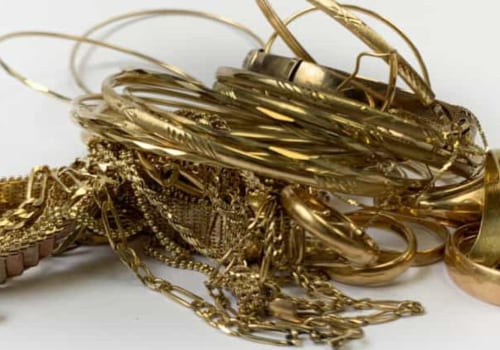The three main options for investing in physical gold are bullion, coin and jewelry, gold bullion. When most people think of investing in gold, bars are what they think of big, shiny gold bars locked in a vault. Skylar Clarine is a data checker and personal finance expert with extensive experience including veterinary technology and film studios. From the time of ancient civilizations to the modern era, gold has been the world's preferred currency.
Nowadays, investors buy gold mainly as protection against political unrest and inflation. In addition, many top investment advisors recommend portfolio allocation in commodities, including gold, to reduce overall portfolio risk. We will cover many of the opportunities to invest in gold, including bullion (ie,. With few exceptions, only bullion, futures and a handful of specialized funds provide an opportunity for direct investment in gold.
Other investments derive part of their value from other sources. This is perhaps the best-known form of direct ownership of gold. Many people think that gold bars are the big gold bars found in Fort Kno. In reality, gold bars are any form of pure, or nearly pure, gold that has been certified for its weight and purity.
This includes coins, bars, etc. A serial number is also often attached to gold bars, for security reasons. The Eagle and the Canadian Maple Leaf. The main problems with gold bars are that storage and insurance costs and the dealer's relatively large profit margin hinder profit potential.
In addition, the purchase of gold bars is a direct investment in the value of gold, and each change in a dollar in the price of gold will change proportionally the value of the shares themselves. An alternative to buying gold bars directly is to invest in one of the gold-based exchange-traded funds (ETFs). Each share of these specialized instruments represents a fixed amount of gold, such as one-tenth of an ounce. These funds can be bought or sold, just like stocks, in any brokerage account or IRA.
Therefore, this method is easier and more profitable than owning bars or coins directly, especially for small investors, since the minimum investment is only the price of a single share of the ETF. The average annual expenditure ratios of these funds are usually around 0.65%, much less than the fees and expenses of many other investments, including most investment funds. Read your prospectuses for more information. Traditional mutual funds tend to be actively managed, while ETFs adhere to a passive index-tracking strategy and therefore have lower spending rates.
However, for the average gold investor, mutual funds and ETFs are now generally the easiest and safest way to invest in gold. Futures options are an alternative to buying a futures contract directly. These grant the option owner the right to purchase the futures contract within a specified period, at a pre-established price. One of the benefits of an option is that it leverages your original investment and limits losses to the price paid.
A futures contract purchased on margin may require more capital than was originally invested if losses increase rapidly. Unlike a futures investment, which is based on the current value of gold, the disadvantage of an option is that the investor must pay a premium to the underlying value of gold to own the option. Due to the volatile nature of futures and options, they may not be suitable for many investors. Even so, futures are still the cheapest way (fees and interest charges) to buy or sell gold by investing large sums.
Companies specializing in mining and refining will also benefit from rising gold prices. Investing in these types of companies can be an effective way to make a profit from gold and can also carry a lower risk than other investment methods. The largest gold mining companies have extensive global operations; therefore, business factors common to many other large companies influence the success of such investment. As a result, these companies can still show profits in times of stable or declining gold prices.
One way to do this is to hedge against falling gold prices as a normal part of your business. Some do this and others don't. Even so, gold mining companies can offer a safer way to invest in gold than by directly owning bullion. At the same time, the investigation and selection of individual companies requires due diligence on the part of the investor.
As this is a time-consuming endeavor, it may not be feasible for many investors. About 49% of the world's gold production is used to make jewelry. On the other hand, it is shown that buyers of gold jewelry are somewhat price-sensitive, buying less if the price rises rapidly. Buying jewelry at retail prices implies a substantial margin of up to 400% on the underlying value of gold.
You can find better jewelry bargains in real estate sales and auctions. The advantage of buying jewelry this way is that there is no retail profit margin; the downside is the time spent searching for valuable pieces. However, jewelry ownership is the most pleasant way to own gold, even if it is not the most profitable from an investment point of view. As an art form, gold jewelry is beautiful.
As an investment, it's mediocre unless you're the jeweler. Larger investors who wish to have direct exposure to the price of gold may prefer to invest in gold directly through bullion. There's also a level of comfort found in owning a physical asset rather than just a piece of paper. The downside is the slight premium to the value of gold paid on the initial purchase, as well as storage costs.
The idea that jewelry is an investment is historic but naive. There is too much room between the price of most jewels and their gold value to be considered a real investment. Instead, the average gold investor should consider gold-oriented mutual funds and ETFs, as these securities generally provide the easiest and safest way to invest in gold. But this gold standard didn't last forever.
During the 1900s, there were several key events that eventually led to gold's transition out of the monetary system. In 1913, the Federal Reserve was created and began issuing promissory notes (the current version of our paper money) that could be exchanged into gold on demand. The Gold Reserve Act of 1934 granted the U.S. Government title to all gold coins in circulation and end the minting of any new gold coins.
In short, this act began to establish the idea that gold or gold coins were no longer needed to serve as money. It dropped out of the gold standard in 1971, when its currency stopped being backed by gold. To determine the investment merits of gold, let's compare its return to last year's S%26P 500 (as of March 2021). Gold outperformed S%26P 500 during this period, with the S%26P index generating around 10.4% in total returns compared to gold, which yielded 18.9% over the same period.
In addition to being made of gold, jewelry and numismatic coins are purchased both for their gold value and for their cultural, historical or aesthetic appeal. In a bull market, this means that the value of these items will generally increase faster and will often exceed the market price of gold. In a bear market, the opposite is true and the same elements will tend to decline at a faster rate than their bullion counterparts. Subscribe to our mailing list and stay up to date with the latest bullion market news and analysis.
Most people think that gold bars are the large, uniform physical gold bars that are stored in huge vaults in places like Fort Knox and the Federal Reserve. In reality, gold bars can come in any quantity or form as long as they meet a minimum purity threshold and have been certified for their weight and quality. You can buy gold bars in units as low as a fraction of a gram or as high as a kilogram or more. Gold bars often come in the form of gold coins, which are a little more popular, as they come in more manageable denominations and are easier to transport and store safely.
The main drawback of gold coins is that they are often traded with a margin greater than an equivalent amount of gold bars. You can find deals for gold coins from independent traders and pawnshops, but you are more likely to come across low-reputable traders and counterfeit products in this way. Investing in gold jewelry instead of coins or bars may seem like a good idea, as gold jewelry plays a role while appreciating its value. However, gold jewelry carries much more risks than gold bars or coins and it's only a good idea if you're an experienced gold investor who knows exactly what you're looking for.
Gold jewelry is often sold in independent stores and pawnshops, where it is more difficult to verify the authenticity of a piece. It is wiser to buy from a reputable and well-established retailer and ask for documentation of the authenticity of your item. These funds contain “packages” of gold investments divided between tangible assets, shares in mining and refining companies, and futures and options for gold bullion. By combining these different types of assets into a single investment fund, gold ETFs and mutual funds offer investors a “best of both worlds” scenario.
Investors are exposed to stable gold assets and the flexibility of trading through a brokerage agency, without assuming the same amount of risk associated with purchasing individual gold mining shares. Gold ETFs focus on owning physical gold or shares of gold mining companies, creating different risk profiles. ETF Focused on Holding Physical Gold Bullion Offers Investors Direct Exposure to Gold Price. They tend to match the movement of gold prices relatively well.
However, ETFs have a cost in the form of an ETF expense ratio. However, the cost may be worth it, as gold ETFs are usually the easiest way to invest in gold. These investors have as many reasons to invest in metal as there are methods to make those investments. It is clear that gold has historically served as an investment that can add a diversifying component to your portfolio, regardless of whether you are concerned about inflation, a declining U.
These are some of the main benefits of gold, but investment, like all investments, is not without risks and drawbacks. There are many reasons why gold is such a popular investment and it has remained that way for much of history. There are too many new investors participating in the gold market without any research, which almost leads to buying the inappropriate gold product. If you think gold could be a safe bet against inflation, investing in coins, bars or jewelry are paths you can take to gold-based prosperity.
Investment decisions should be based on an assessment of your own personal financial situation, needs, risk tolerance and investment objectives. The likelihood that an asset class or a single investment will significantly decrease in value is much greater than the likelihood that a well-balanced portfolio of many different investments from various asset classes will depreciate significantly. The biggest advantage of using futures to invest in gold is the immense amount of leverage you can use. That way, as a first-year student, the first thing is to know the types of gold investment products and their characteristics.
The investment information provided in this table is for general informational and educational purposes only and should not be construed as financial or investment advice. . .



